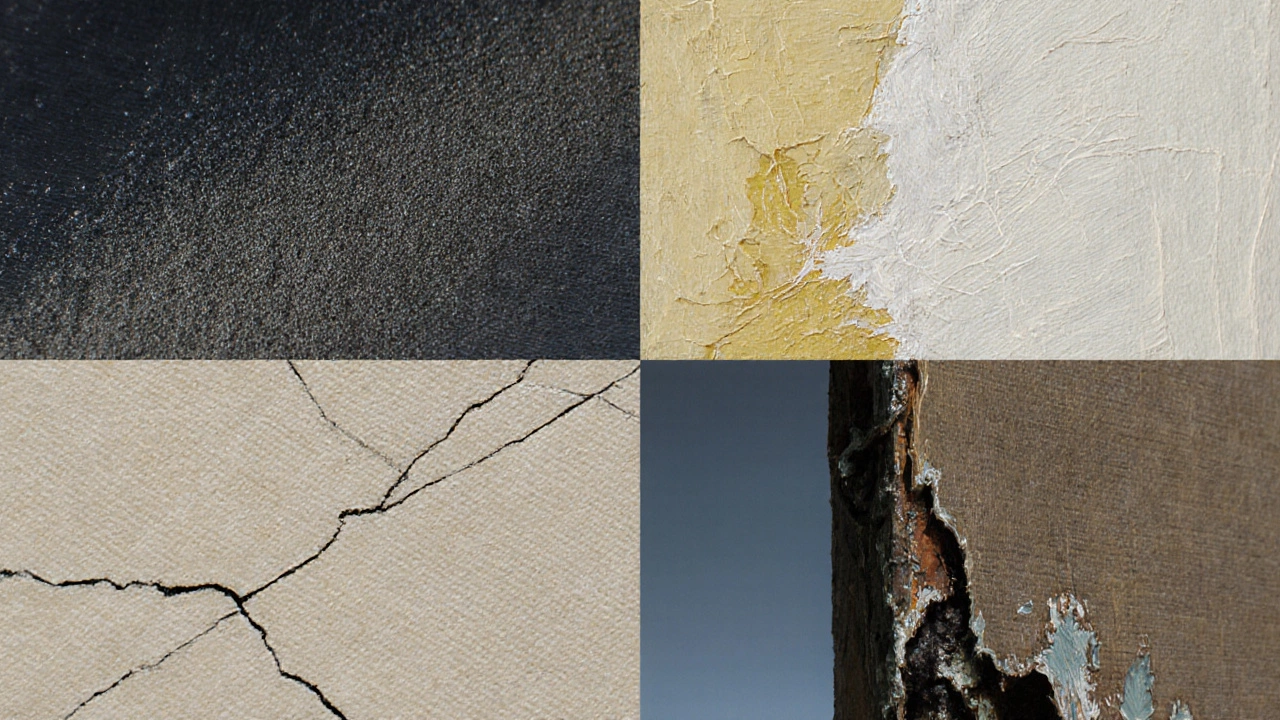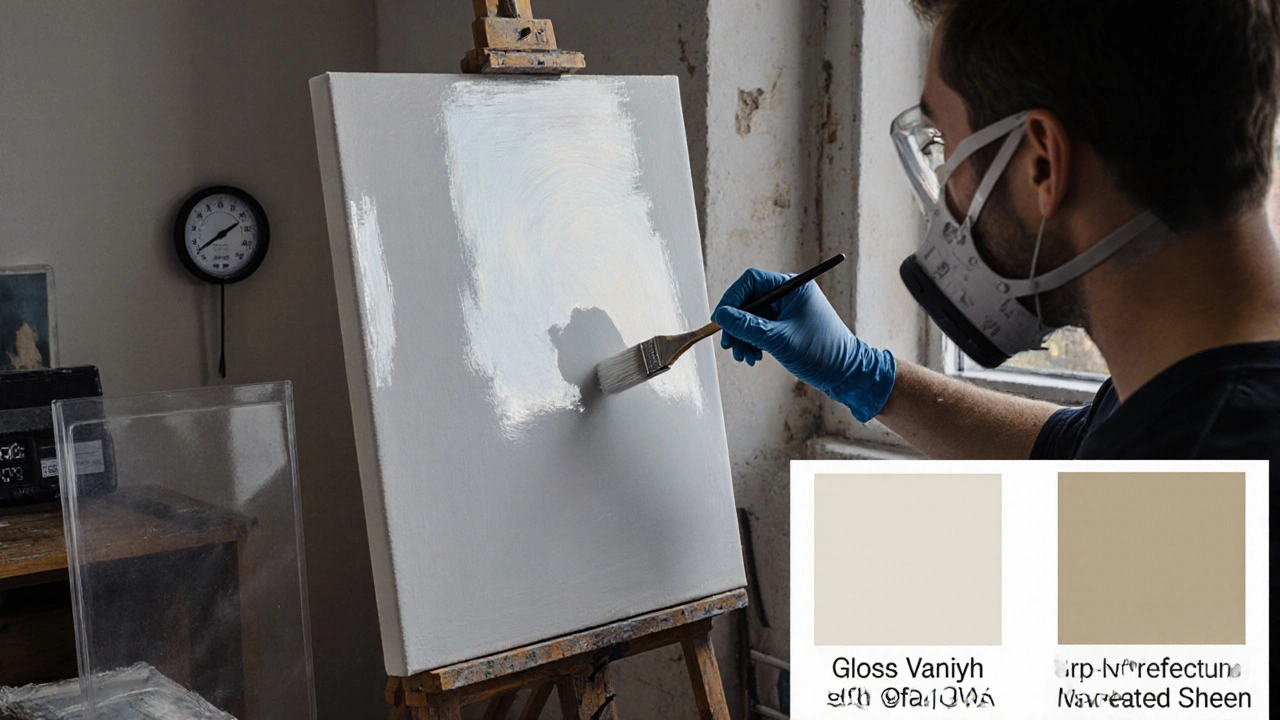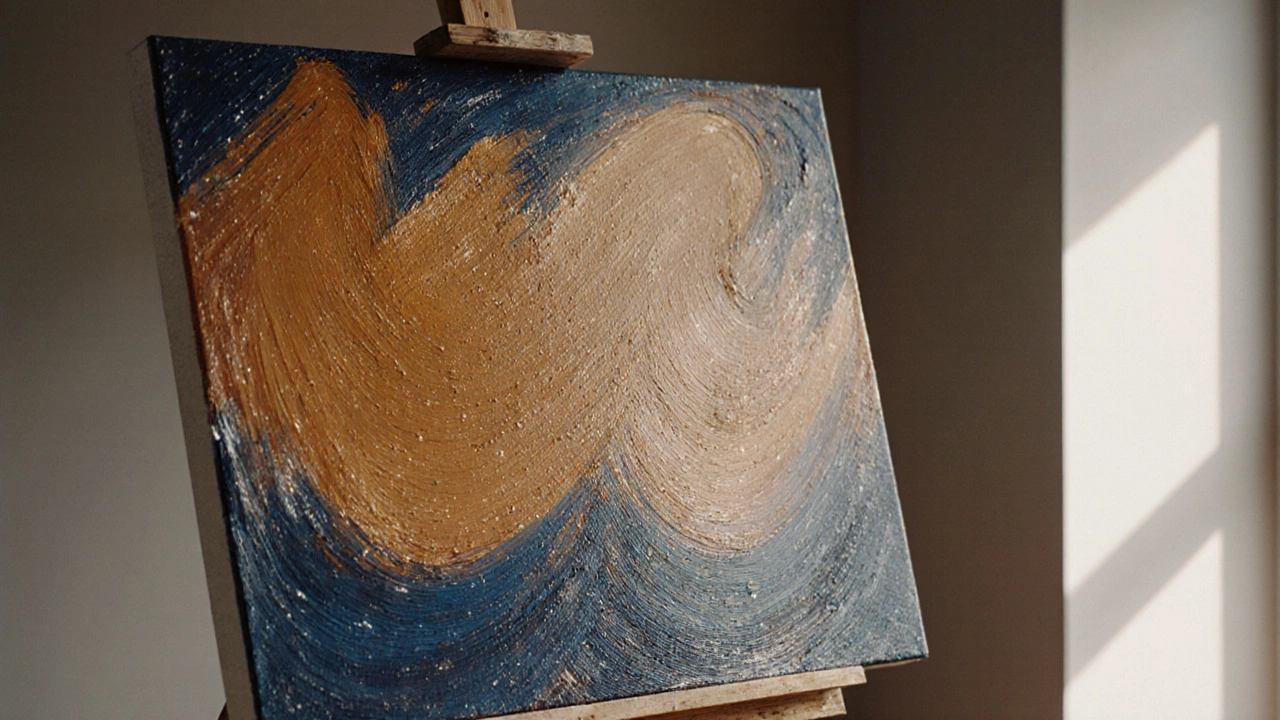Oil Painting Varnish Readiness Calculator
This tool estimates when your oil painting is dry enough to safely apply varnish. Based on the article "Skipping Varnish on an Oil Painting: Risks and How to Protect Your Work," proper drying time is crucial to prevent damage to your artwork.
Results will appear here after calculation.
When an artist decides to leave a finished canvas untouched, the first question is often, oil painting varnish - is it really necessary? Oil painting varnish is a clear, protective coating applied to a completely dry oil painting to shield it from dust, UV light, and environmental pollutants while enhancing or moderating its sheen.
Why Varnish Is More Than Just a Gloss
Varnish does three jobs at once: it creates a barrier against airborne contaminants, it reduces the chemical oxidation of the oil binder, and it evens out the surface’s visual texture. Without that barrier, the painting’s surface stays exposed to the very elements that cause long‑term damage.
What Happens When You Skip the Varnish?
Skipping the final coating can lead to several problems, each of which accumulates over time:
- Dust and particulate buildup - fine particles settle on the wet‑to‑dry paint film and become permanent stains.
- UV‑induced yellowing - the linseed oil in the paint breaks down faster under sunlight, turning the whites creamy or brownish.
- Cracking and crazing - as the underlying oil continues to tighten, the lack of a flexible film means the paint surface may split, creating spider‑like lines.
- Uneven gloss - parts of the canvas that dry at different rates can reflect light inconsistently, making the work look patchy.
- Moisture ingress - humidity can seep into the paint layers, swelling the canvas and causing the paint to lift.
All of these issues are well documented in conservation literature; for instance, the Getty Conservation Institute notes that untreated oil paintings left in normal indoor conditions can accumulate up to 0.03 mg of dust per square centimetre per year.
Real‑World Examples
Consider the case of a mid‑century realist who exhibited a series of portraits without varnish. Within two years, the museum’s climate‑control logs recorded a 12 % increase in surface grime on the works, prompting a costly conservation treatment that involved micro‑abrasion and a fresh varnish layer.
Another example comes from a hobbyist who painted a landscape on stretched Canvas cotton or linen backing prepared with primer, typically gesso, used as the support for oil paint. After three winters in a damp loft, the canvas warped and the paint began to flake, a direct result of moisture penetrating the unprotected surface.
Can You Protect a Painting Without Varnish?
If you truly cannot varnish (perhaps due to a museum’s conservation policy or a finished work that must stay matte), you can still mitigate damage:
- Store the painting in a climate‑controlled environment (stable temperature 18‑22 °C, relative humidity 45‑55 %).
- Use UV‑filtering glazing or acrylic sheets if the work will be displayed.
- Apply a thin, reversible “protective spray” such as a mist of mineral oil - though this is only a temporary fix.
- Schedule regular dust‑removal using a soft, natural‑hair brush held at a 45° angle.
These steps buy you time but never replace the long‑term stability that a proper varnish provides.
How to Varnish Correctly - A Step‑by‑Step Guide
When you decide to apply a finish, follow this reliable process:
- Check that the painting is fully dry. A standard 1 mm layer of oil paint can take 6‑12 months to cure; use a moisture meter if unsure.
- Choose the right varnish. Dammar resin a natural tree resin dissolved in turpentine, known for a high‑gloss finish and warm tone offers traditional brilliance, while Acrylic polymer varnish a water‑based, flexible coating that dries clear and resists yellowing provides durability and a non‑yellowing matte option.
- Prepare the workspace. Work in a well‑ventilated area, lay down a lint‑free sheet, and wear a respirator if using solvent‑based varnish.
- Apply thin, even coats. Use a soft, wide‑bristle brush or a spray gun for uniform coverage. Let each coat dry (typically 30 minutes for acrylic, 1‑2 hours for damar) before the next.
- Allow full cure. After the final coat, let the piece sit for at least 24 hours before handling.

Choosing Between Gloss, Matte, and Semi‑Matte
Each finish interacts differently with light and the underlying paint. The table below summarizes the key differences:
| Attribute | Gloss (Dammar) | Matte (Acrylic) | No Varnish |
|---|---|---|---|
| Protection Level | High - strong barrier | Moderate - flexible film | None |
| UV Resistance | Medium - can yellow over decades | High - non‑yellowing | Low |
| Surface Appearance | Rich, reflective | Soft, non‑reflective | Natural paint sheen (often uneven) |
| Re‑workability | Difficult - requires solvent removal | Easy - can be cleaned with water | Not applicable |
| Cost | Higher - natural resin price | Lower - water‑based acrylic | Zero |
Checklist: Is Your Painting Ready for Varnish?
- ✓ Paint surface is fully cured (use moisture meter or wait 6‑12 months).
- ✓ Workspace is dust‑free and well‑ventilated.
- ✓ Desired finish (gloss, matte, semi‑matte) is selected.
- ✓ Protective gloves and respirator are on hand.
- ✓ You have a soft brush or spray gun and a lint‑free cloth for cleanup.
Common Problems After Varnishing (and How to Fix Them)
Even seasoned artists run into issues. Here are the most frequent and quick fixes:
| Problem | Cause | Solution |
|---|---|---|
| Cloudy or milky finish | Moisture trapped in the varnish | Re‑coat after raising temperature slightly (20‑22 °C) and allowing extra drying time. |
| Brush marks | Too thick a layer | Lightly sand with ultra‑fine 1200‑grit paper, then apply a thin corrective coat. |
| Yellowing over time | Using dammar or oil‑based varnish in a sunny location | Switch to acrylic polymer varnish; protect with UV‑filtering glass. |
Bottom Line
Leaving an oil painting unvarnished is essentially leaving it open‑air exposed. Dust, UV light, and the natural ageing of the oil binder will gradually degrade the surface, dull the colours, and potentially cause structural damage. While careful storage can slow the process, varnish remains the most reliable, reversible protective layer.
Choose a varnish that matches your aesthetic goals, apply it with patience, and keep the painting in a stable environment. Your artwork will stay vibrant for decades, and you’ll avoid costly conservation later.

Do I have to wait for the painting to be completely dry before varnishing?
Yes. Even if the surface looks dry, the oil binder can retain moisture for months. Applying varnish too early traps solvents and leads to clouding or cracking. Use a moisture meter or follow the artist’s rule of thumb: wait at least one year for thick applications.
Can I use spray varnish on a finished oil painting?
Spray varnish works well for even coverage, especially on large canvases. Choose an acrylic‑based spray to avoid the strong solvents of traditional damar sprays. Test on a small hidden area first.
Will a matte varnish change the colours of my painting?
Matte acrylic varnish slightly mutes the reflective intensity but does not alter hue. Artists who want the original brilliance often apply a gloss varnish then a final matte top coat to keep colour fidelity.
How often should I re‑varnish a painting?
A well‑applied acrylic polymer varnish can last 15‑20 years in stable conditions. If you notice yellowing, dust buildup, or loss of gloss, it’s time to clean and re‑apply.
Is there a reversible way to remove varnish if I change my mind?
Acrylic varnish can be removed with mild soap and water or a specialized acrylic remover. Solvent‑based dammar requires turpentine or mineral spirits. Always test on a corner before full removal.

